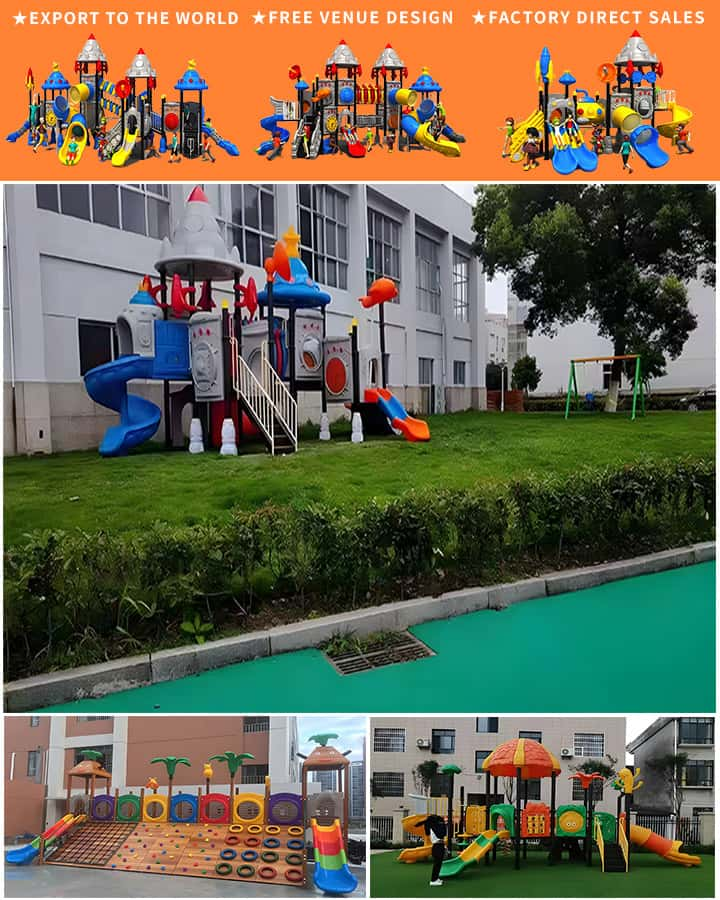In the bustling world of early childhood education, outdoor play is an invaluable component that fosters physical development, social skills, and creativity. As educators and parents strive to create enriching environments for preschoolers, selecting the right playground equipment becomes paramount. This article delves into essential considerations and recommendations for preschool playground equipment designed for outdoor use, ensuring a safe and stimulating experience for young children.
Safety First
Safety is the cornerstone of any playground, particularly for preschoolers who are still developing their motor skills and coordination. The following safety features are crucial when choosing outdoor playground equipment:
Soft Surfacing: Ensure that the playground surface is made of soft materials such as rubber mats, sand, or wood chips. These surfaces provide cushioning to reduce the impact of falls, minimizing the risk of injuries.
Rounded Edges and Seams: All equipment should have smooth, rounded edges and seamless joints to prevent cuts and scrapes. Avoid sharp angles that could pose hazards.
Age-Appropriate Design: Choose equipment specifically designed for preschool-aged children, typically ranging from ages two to five. These designs account for the physical and cognitive capabilities of young children.
Regular Maintenance: Inspect the playground equipment regularly for signs of wear and tear. Promptly address any issues to maintain a safe environment.
Types of Outdoor Playground Equipment
When designing an outdoor playground for preschoolers, a variety of equipment can be included to promote different aspects of development. Here are some essential types:

1. Slides
Slides are a classic favorite among preschoolers and come in various shapes and sizes. Look for slides with gentle slopes and wide steps to ensure easy access and descent. Incorporate both straight and spiral slides to keep the experience exciting and diverse.
2. Climbing Structures
Climbing structures, such as small ladders, steps, and ramps, help develop gross motor skills and encourage physical confidence. These structures should be sturdy, with non-slip surfaces, and designed to challenge children just enough without being intimidating.
3. Balance Beams and Walkways
Balance beams and walking planks aid in developing balance and coordination. Ensure they are low to the ground and made from durable, non-slip materials. These elements can be integrated into obstacle courses for added fun and learning opportunities.
4. Swings
Swings are excellent for developing vestibular sense and core strength. Opt for bucket or belt swings that provide secure seating for preschoolers. Ensure that swing sets have adequate overhead clearance to prevent accidents.
5. Sandboxes
Sandboxes offer endless creative opportunities for sensory exploration and fine motor skill development. They should be filled with clean, fine sand and equipped with tools such as shovels, buckets, and molds to inspire imaginative play.
6. Playhouses and Forts
Imaginative play is crucial for cognitive development. Playhouses, forts, and themed structures provide opportunities for role-playing and cooperative play. Ensure these structures are open and accessible to avoid feelings of entrapment.
Additional Considerations
Beyond individual pieces of equipment, consider the overall design and layout of the playground to create a cohesive and engaging space:
- Zoning: Designate areas for different types of play, such as active play, quiet play, and sensory play, to cater to varied interests and needs.
- Accessibility: Ensure the playground is accessible to all children, including those with disabilities. Incorporate wheelchair-friendly pathways and inclusive equipment where possible.
- Supervision: Maintain clear sightlines for supervising adults to ensure children’s safety at all times. Install benches or vantage points for caregivers to monitor the playground effectively.
Conclusion
An well-designed outdoor playground is a treasure trove of learning and growth for preschoolers. By prioritizing safety, choosing age-appropriate equipment, and considering the overall layout, educators and parents can create an environment that not only entertains but also nurtures the developmental needs of young children. With the right outdoor playground equipment, preschoolers can embark on adventures that spark their imagination, build their physical abilities, and lay the foundation for a lifetime of healthy play.




